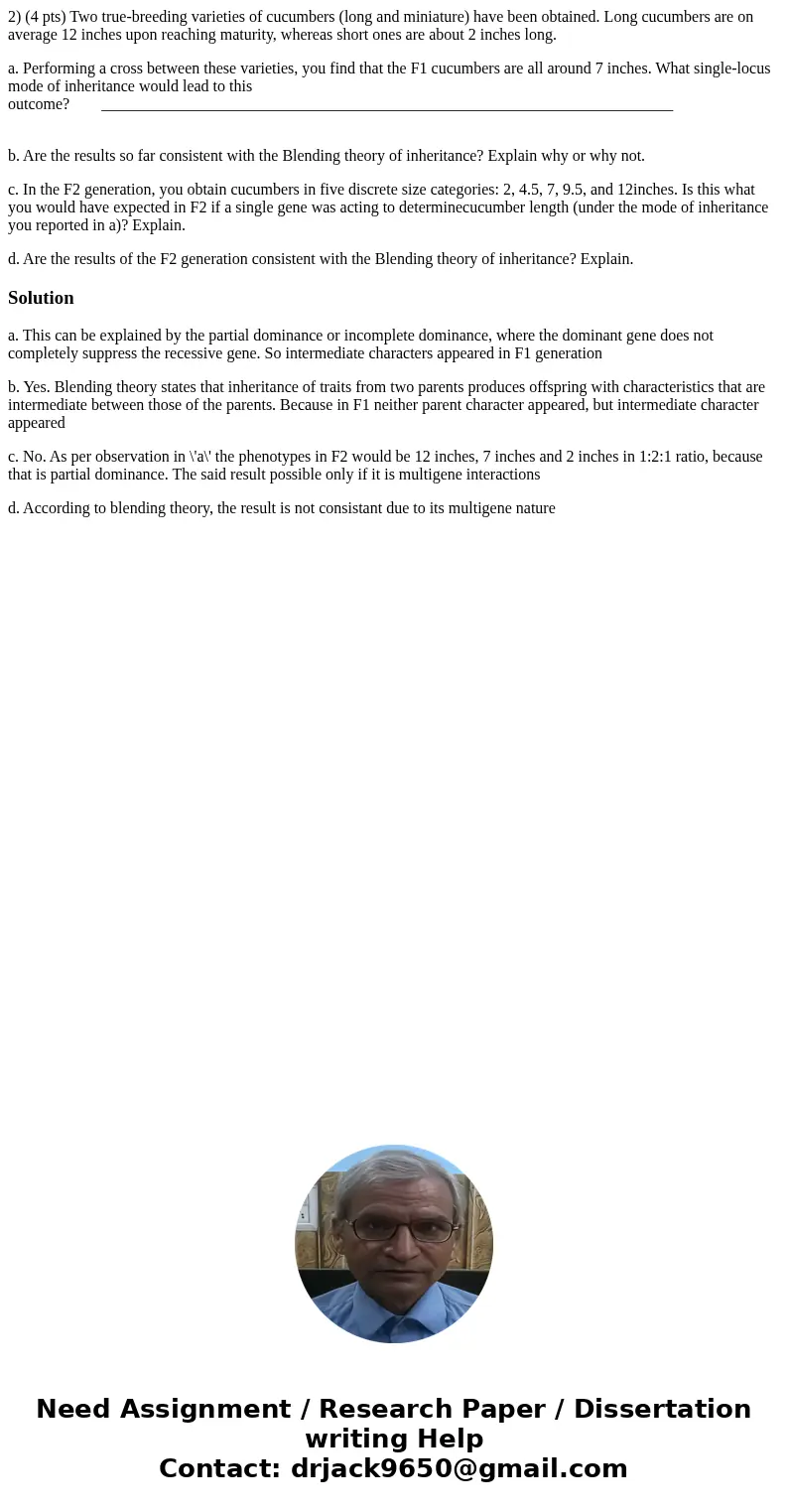2 4 pts Two truebreeding varieties of cucumbers long and min
2) (4 pts) Two true-breeding varieties of cucumbers (long and miniature) have been obtained. Long cucumbers are on average 12 inches upon reaching maturity, whereas short ones are about 2 inches long.
a. Performing a cross between these varieties, you find that the F1 cucumbers are all around 7 inches. What single-locus mode of inheritance would lead to this outcome? ________________________________________________________________________
b. Are the results so far consistent with the Blending theory of inheritance? Explain why or why not.
c. In the F2 generation, you obtain cucumbers in five discrete size categories: 2, 4.5, 7, 9.5, and 12inches. Is this what you would have expected in F2 if a single gene was acting to determinecucumber length (under the mode of inheritance you reported in a)? Explain.
d. Are the results of the F2 generation consistent with the Blending theory of inheritance? Explain.
Solution
a. This can be explained by the partial dominance or incomplete dominance, where the dominant gene does not completely suppress the recessive gene. So intermediate characters appeared in F1 generation
b. Yes. Blending theory states that inheritance of traits from two parents produces offspring with characteristics that are intermediate between those of the parents. Because in F1 neither parent character appeared, but intermediate character appeared
c. No. As per observation in \'a\' the phenotypes in F2 would be 12 inches, 7 inches and 2 inches in 1:2:1 ratio, because that is partial dominance. The said result possible only if it is multigene interactions
d. According to blending theory, the result is not consistant due to its multigene nature

 Homework Sourse
Homework Sourse